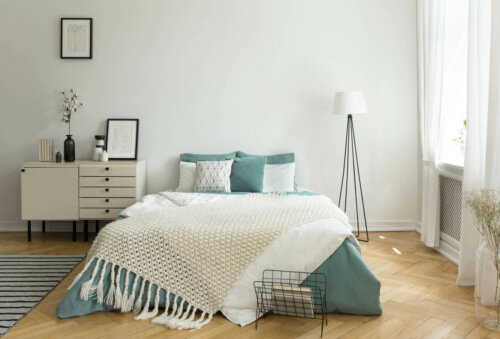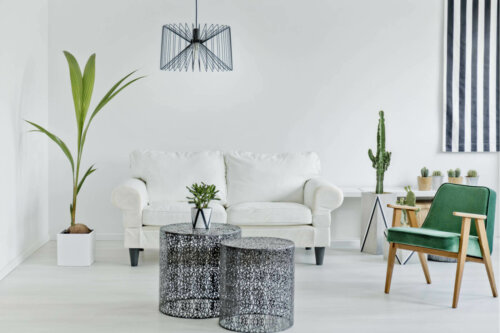How to Use Sage Green in Your Home

If you want to add a naturalistic touch to your interiors, you can use sage green in your home. Its aesthetic contribution may surprise you, as the different options it offers make it an interesting color.
Colors are an indispensable part of rooms. Depending on the exact ones you choose, you’ll create different visual effects and environments. This is why it’s important to properly choose those that best suit the spaces.
One aspect to keep in mind is that colors personally identify you. In other words, your decoration must represent your identity. For this reason, the color palette you choose should convey sensations.
What’s the difference between sage and other greens?

This shade differs from other greens for different reasons. Firstly, it isn’t too flashy and can be subtle.
Interior design professionals consider it the antithesis of vibrant, intense, and strident colors. It’s a neutral color that isn’t too dark or too light. It’s a muted color that isn’t strong.
It blends perfectly well with its surroundings and goes with other dark colors. Also, it isn’t like emerald green, pistachio, mint, clover, or any other green. It’s unique due to its subdued aesthetics.
Sage green doesn’t clash nor hinder decorative dialogue. Therefore, it goes well with everything.
How to use sage green in your home
Where could you put it? As we mentioned above, it goes well in any part of the house. You should carefully study its decorative contribution. Here are some examples to help you out:
- If you have a room with light colored walls and furniture, a good idea is to introduce sage decorative resources such as cushions that you can mix and match with other printed or contrasting cushions of other colors. This way, you harmonize the entire decoration.
- You can find sage green sofas, armchairs, and chairs. Although they aren’t common, they can be very attractive. Greens are pleasing and eye-catching. As this green isn’t too intense, it looks amazing indoors.
- You can try adding it in the bedroom with a bedspread, cushions, and curtains. You’ll establish a coherent dialogue that helps create a general harmony.
- Also, it’s a good idea to contrast it with the brown of parquet floors. You can achieve a natural, sophisticated, and elegant environment that balances the room’s character. Try this new trend for homes!
- In the kitchen, it can create a country feel. You can add it through small decorative resources. Often, it’s a color that’s used in American and Nordic kitchens.

Sage on your walls to create a peaceful environment
You should consider adding this color to your walls, as it can enhance a room in many ways. On one hand, it helps create a peaceful, calm, and quiet environment. It doesn’t produce tension or feel overwhelming.
On the other , you can paint all your walls this color. This way, you create a subtle, delicate, and refined environment. It’s appropriate for modern and traditional classic styles, as well as for rustic or minimalist ones.
Sage green is a very versatile color. This is because you can add it to any space, regardless of your home’s design or decorative style. In addition, it can be mixed and matched and related to other decorative elements.
Mix and match sage green with other colors
This color is a great choice because it’s incredibly adaptable. It goes well with neutral tones and white. Also, you can relate it to the earthy wood of the furniture and the floors.
In turn, it goes amazingly well with muted pastels and warm colors. However, you shouldn’t mix and match it with intense reds or strong yellows. Remember that your goal is to produce a sense of calm and achieve color harmony.
All cited sources were thoroughly reviewed by our team to ensure their quality, reliability, currency, and validity. The bibliography of this article was considered reliable and of academic or scientific accuracy.
- Atkins, Caroline:Colorea tu hogar, Londres, Ceac, 2003.